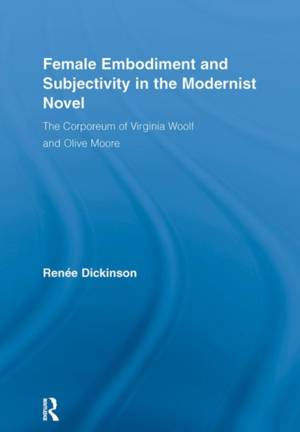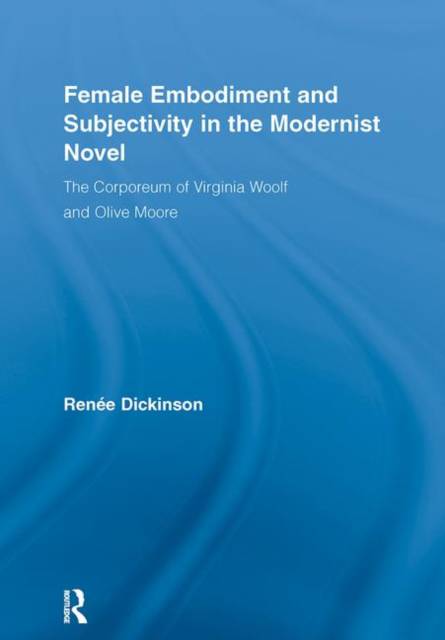
Nos liseuses Vivlio rencontrent actuellement des problèmes de synchronisation. Nous faisons tout notre possible pour résoudre ce problème le plus rapidement possible. Toutes nos excuses pour la gêne occasionnée !
- Retrait gratuit dans votre magasin Club
- 7.000.000 titres dans notre catalogue
- Payer en toute sécurité
- Toujours un magasin près de chez vous
Nos liseuses Vivlio rencontrent actuellement des problèmes de synchronisation. Nous faisons tout notre possible pour résoudre ce problème le plus rapidement possible. Toutes nos excuses pour la gêne occasionnée !
- Retrait gratuit dans votre magasin Club
- 7.000.0000 titres dans notre catalogue
- Payer en toute sécurité
- Toujours un magasin près de chez vous
Female Embodiment and Subjectivity in the Modernist Novel
The Corporeum of Virginia Woolf and Olive Moore
Renée Dickinson
195,95 €
+ 391 points
Format
Description
This studyconsiders the work of two experimental British women modernists writing in the tumultuous interwar period--Virginia Woolf and Olive Moore--by examining four crucial incarnations of female embodiment and subjectivity: female bodies, geographical imagery, national ideology and textual experimentation. Dickinson proposes that the ways Mrs. Dalloway, and The Waves by Virginia Woolf and Spleen and Fugue by Olive Moore reflect, expose and criticize physical, geographical and national bodies in the narrative and form of their texts reveal the authors' attempts to try on new forms and experiment with new possibilities of female embodiment and subjectivity.
Spécifications
Parties prenantes
- Auteur(s) :
- Editeur:
Contenu
- Nombre de pages :
- 192
- Langue:
- Anglais
- Collection :
Caractéristiques
- EAN:
- 9780415993838
- Date de parution :
- 01-06-09
- Format:
- Livre relié
- Format numérique:
- Genaaid
- Dimensions :
- 152 mm x 229 mm
- Poids :
- 430 g







